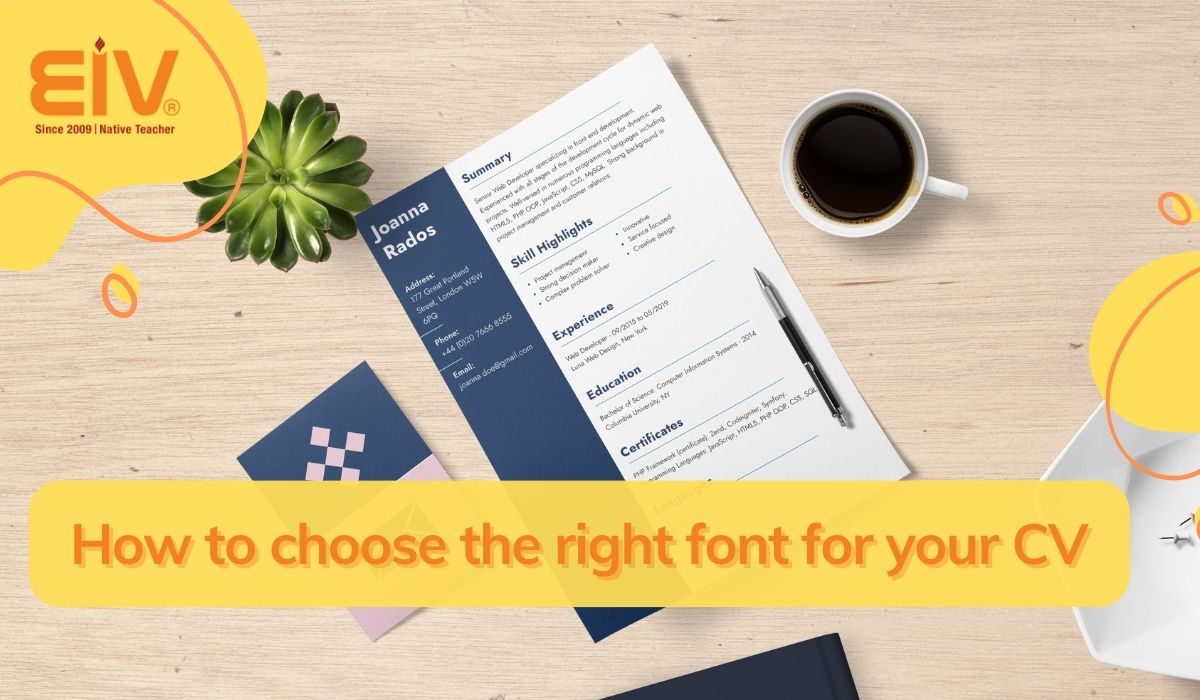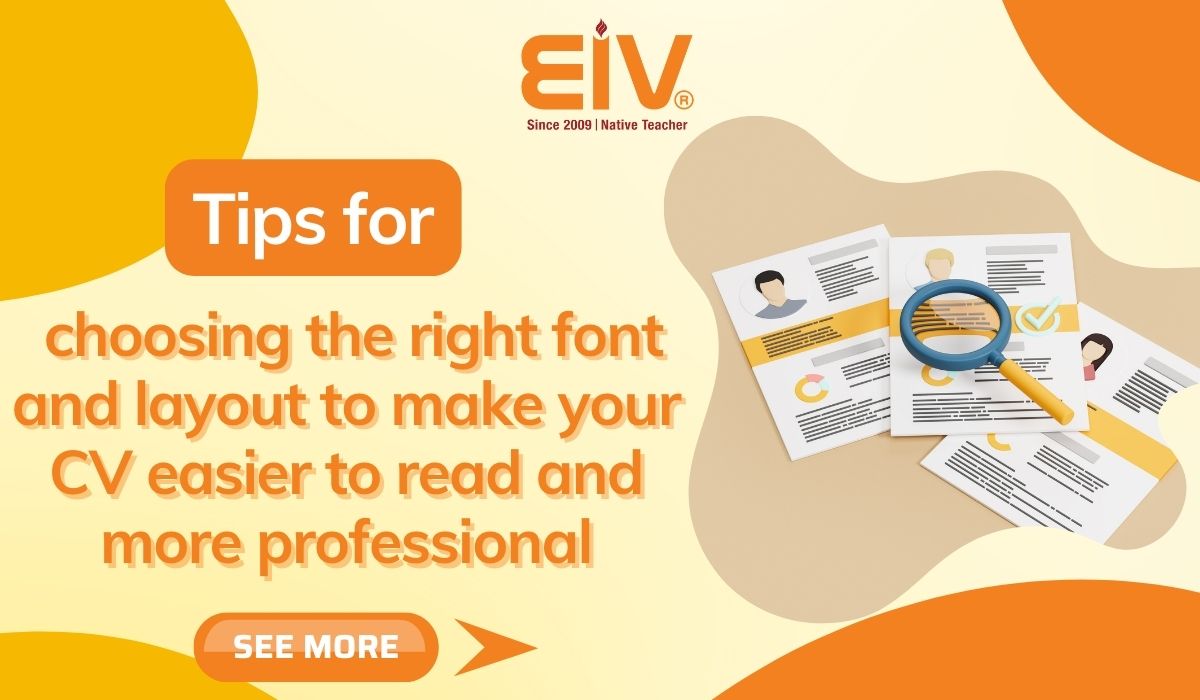An eye-catching CV that attracts recruiters needs to consider multiple factors. In particular, choosing appropriate fonts and layout for your CV plays a crucial role in making it more professional. Let’s explore with EIV how to select fonts and layout for your CV to make a good impression on recruiters!
EIV Group, with over 13+ years of experience in providing native English teachers in Hanoi and managing quality native teachers with bachelor’s, master’s degrees or higher, complete international English teaching certifications, and extensive experience. Meeting all teaching staff requirements for schools, centers, and educational institutions. Ensuring enhanced teaching quality suitable for learners of all ages.
How to Choose Appropriate Fonts for Your CV
With the diverse range of fonts available today, you might feel uncertain about which font is suitable for your CV. Initially, you might be drawn to choosing distinctive fonts based on personal preference, but keep in mind that recruiters highly value CVs presented with neat and readable fonts rather than those with overly decorative or complex fonts.
Depending on your industry, you can choose different fonts. For creative fields like design, graphic design, and marketing, you can be more flexible with font choices and create more elaborate layouts to showcase your skills. For other professions, you should prioritize neat CV layouts and easily readable fonts.
Choosing Professional, Clear, and Readable Fonts
Selecting appropriate fonts and layout for your CV starts with using common text fonts like Arial, Times New Roman, etc. These simple and neat fonts allow recruiters to read your CV clearly and grasp your information quickly.
Avoiding “Light” or “Thin” Fonts
When choosing fonts, the goal is to make your CV information clear and legible. Avoid using fonts that are too “light” or “thin” as they can make your CV difficult to read on computer screens.
Choosing Appropriate CV Font Sizes
The optimal font size for CVs typically ranges from 10 to 12. Font size significantly impacts the CV’s layout. A CV should typically be 1-2 pages long; start with a font size of 11 and adjust up or down to fit your layout.
Optimizing your CV to fit on one page is best, but if you need more space, use a second page and absolutely avoid reducing font size below 10. This will make your CV hard to read and cause text to appear cramped, making it difficult for recruiters to review your CV.
Marking, Bolding, and Underlining to Emphasize CV Fonts
When presenting information in your CV, highlight important information by choosing specific font styles for main headings, including: bold, underline, and italic. You can select headings such as Education, Experience, and Expertise for different fonts and combine with bold, italic, etc. Note the importance of consistency – font styling should be limited to one or two types to ensure your CV appears scientific, attractive, and readable.
Common Fonts Used in Job Applications

To choose appropriate fonts and layout for your CV, you can consider these fonts suggested by EIV:
- Times New Roman and Gill Sans: Both are serif fonts commonly used in formal documents.
- Comic Sans and Proxima Nova: These are sans-serif fonts with a modern approach, giving your CV a younger, neater style.
- Arial and Calibri: While Arial is Windows’ default font, Calibri is iOS’s default. These sans-serif fonts are extremely popular for their clear, coherent, readable characters that help recruiters easily access your information.
Proper CV Layout

After choosing fonts for your job application, layout is crucial in making your CV impressive to recruiters. You can reference this CV layout suggested by EIV:
- Personal photo + basic applicant information (including: Full name, gender, birth year, phone number, email, address).
- Career objectives: State goals aligned with company objectives and suitable for the position you’re applying for.
- Education in application/CV: This is also an important section to include in your CV, helping recruiters understand your educational background.
- Work experience in CV: This is the most important and essential part of any job application CV to demonstrate your capabilities.
- Soft skills: Add soft skills at the end of your CV for extra points with recruiters!
- Certifications, awards: Demonstrate your personal capabilities, which will be advantages in recruiters’ eyes.
In the above article, EIV has shared tips for choosing appropriate fonts and layout for your CV, common CV fonts, and typical CV layouts. We hope that through EIV’s article, you’ve gained useful information and know how to present your CV impressively and attractively!





 Hồ Chí Minh: 028 7309 9959 (Phím 1)
Hồ Chí Minh: 028 7309 9959 (Phím 1)
